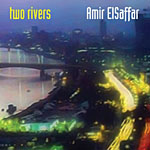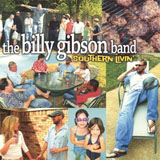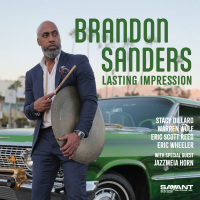Home » Jazz Articles » Profile » Lee Townsend: Originality and Feelings
Lee Townsend: Originality and Feelings
Townsend has named [Floratone] 'futuristic roots music,' and no wonder, as it presents an eclectic mixture of different strands of music with a wide array of electronic sonic wonders.
 The role of the producer varies and changes from project to project. The producer is a person responsible for the overall sound of your project. This includes obtaining the proper musicians for the recording, coaching and guiding the musicians, supervising the recording, material development, and various stages of recording and mixing and mastering. Through the years the role of a record producer has changed and expanded, and today the title is nearly synonymous with "musician" in this field. Great producers have an intangible knack for creating projects that intrigue the public.
The role of the producer varies and changes from project to project. The producer is a person responsible for the overall sound of your project. This includes obtaining the proper musicians for the recording, coaching and guiding the musicians, supervising the recording, material development, and various stages of recording and mixing and mastering. Through the years the role of a record producer has changed and expanded, and today the title is nearly synonymous with "musician" in this field. Great producers have an intangible knack for creating projects that intrigue the public. One of the producers that can be tagged as creative in this domain is clearly Lee Townsend, someone who has produced some of the greatest records of all time. His production interests vary from singer-songwriters, instrumentalists, contemporary composers to improvising musicians and cross-cultural musical collaborations. Townsend has channeled these and other experiences into his unique artistic vision.
In between working as an independent producer, Townsend has worn many hats as he is a manager and owner of the label Songline/Tone Field Productions, was the Vice President of Artists and Repertoire for Verve/Polygram Records, general manager and director of U.S. Operations at ECM Records, and a staff producer at National Public Radio affiliate, KCRW-FM in Santa Monica. So how does he balance all of these duties and obligations? "It's a constant juggling act. But it's very challenging and stimulating to work in these various areas. The management relationship tends to be an outgrowth of the producing relationship.
Through the years he has produced works for various artists working in different genres. The artists range from Bill Frisell, Rinde Eckert, Vinicius Cantuaria, Shweta Jhaveri, Dino Saluzzi, Gabriela, Petra Haden, Viktor Krauss, Charlie Hunter, Dave Holland, and John Abercrombie to Metheny and Scofield, and Dusan Bogdanovic (to name but a few). His productions are characterized by surging, luxuriant and spacious audioscapes. There is textural richness and warmth which makes him unique. "My primary criterion is originality and feeling, an affinity for the artist and the artist's work. I also have to feel like I can learn something from working on a particular album. I like to view each one as something like an inquiry or research project. And finally, I need to have the feeling that I can make a meaningful contribution to the project in hopes that I can help elevate it in a way that might not happen if I wasn't involved.
Working with people can produce both pleasurable and horrible moments. Some works are more of a challenge and break new ground, and others simply don't. Which artists were the most interesting to produce? "Every project has its compelling aspects and interests. That being said, my relationship with Bill [Frisell] and his music is longstanding, deep and ongoing. We share a lot of the same musical and artistic values, such as honoring mystery and a non-hierarchical attitude about many musical styles. Furthermore, by now, we are very close friends. Working with him has been a tremendous challenge and an honor, and I hope we can keep on doing it. Rinde Eckert is another artist from whom I learn a lot during the process of making a record. It's often like a journey that reveals many levels of meaning as the project unfolds. He is a very multifaceted artist, and the productions require a sensitivity to the various and unexpected ways that his verbal and musical ideas interact.
Some works stand out more than others, but in any case it is always difficult to tell which work one is most proud of. "That's difficult to say, because it is sort of like choosing which of your children is your favorite. On the other hand I only have two children, so maybe the analogy isn't so apt. I'll just say that I had the occasion to hear the records that I made with Vinicius Cantuaria, Shweta Jhaveri and Loudon Wainwright III recently. And I was very pleased when I heard them. Of the records I have done with Bill—if I look back on which ones still feel fresh in terms of standing the test of time, I admit to a special soft spot in my heart for The Intercontinentals, Good Dog, Happy Man, Ghost Town and Blues Dream.
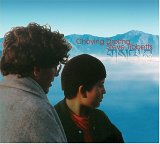 Though he is credited on many recordings, one of the gems that Townsend has produced is the sequel to Steve Tibbetts' and Choying Drolma's masterpiece Chö, titled Selwa. What made a big difference between that bold step into the music and culture of the Himalayas and other quasi-world music recordings was the careful production, delightful sense for ambiance, breath-like silences, unmatchable taste for arranging, and many intangible things that make an excellent album a long and pleasurable listening experience. Nothing has sounded like Chö since then.
Though he is credited on many recordings, one of the gems that Townsend has produced is the sequel to Steve Tibbetts' and Choying Drolma's masterpiece Chö, titled Selwa. What made a big difference between that bold step into the music and culture of the Himalayas and other quasi-world music recordings was the careful production, delightful sense for ambiance, breath-like silences, unmatchable taste for arranging, and many intangible things that make an excellent album a long and pleasurable listening experience. Nothing has sounded like Chö since then. The second collaboration, Selwa, is a successful continuation of this beautiful collaboration where Tibbetts is expanding his musical contribution without distorting the sacred nature of the chants. Selwa is very musical, spiritual, peaceful, and a pleasure to listen to. "First of all, it is such great music. I feel very fortunate to have had a hand in it. That was actually a very unusual situation. Usually I am present for every aspect of a recording and have a very hands-on presence. That particular project was different. My involvement was from afar. Steve kept sending me the music at various stages of development, and I kept giving him my ideas and suggestions about how to proceed. He was very open to my input, and it was a very gratifying experience to work with him.
Floratone is the latest result of a group of musicians consisting of guitarist Bill Frisell, drummer Matt Chamberlaine, and producers Tucker Martine and Townsend. Floratone took two years to shape, and it invokes the pioneering spirit of Miles Davis' 70s music collisions. Townsend has named it "futuristic roots music, and no wonder, as it presents an eclectic mixture of different strands of music with a wide array of electronic sonic wonders.
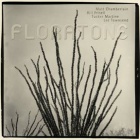 "I like to think of it as having a balance between the rootsy and the ethereal. Initially Matt and Bill just played free in the studio. Then Tucker and I had the role of choosing the moments and musical directions that we wanted to exploit—shaping and arranging the music through editing and looping, and exploring the directions we found most compelling. Then Bill and Matt came back and added more to each piece after we gave it some form. Later, for other pieces, we had Matt play some drum patterns, and then had him and Bill add parts from there. So they were built from the ground up before undergoing the same kind of editing, arranging and overdub process.
"I like to think of it as having a balance between the rootsy and the ethereal. Initially Matt and Bill just played free in the studio. Then Tucker and I had the role of choosing the moments and musical directions that we wanted to exploit—shaping and arranging the music through editing and looping, and exploring the directions we found most compelling. Then Bill and Matt came back and added more to each piece after we gave it some form. Later, for other pieces, we had Matt play some drum patterns, and then had him and Bill add parts from there. So they were built from the ground up before undergoing the same kind of editing, arranging and overdub process. "After that Viktor Krauss came in and did his magic. Toward the end, Bill wrote some horn and string parts for Ron Miles and Eyvind Kang. We then worked with that material before undertaking the final mix, which was pretty involved. I must say that we had a lot of fun working on this project. It started out as something like a laboratory experiment and came out sounding pretty organic and compositional.
This project which features one guitarist, one drummer, two producers, and guest performers makes the recording studio seems like a perfect place for the "futuristic roots music.
A partial list of Lee Townsend's production credits can be found here.
Tags
PREVIOUS / NEXT
Support All About Jazz
 All About Jazz has been a pillar of jazz since 1995, championing it as an art form and, more importantly, supporting the musicians who make it. Our enduring commitment has made "AAJ" one of the most culturally important websites of its kind, read by hundreds of thousands of fans, musicians and industry figures every month.
All About Jazz has been a pillar of jazz since 1995, championing it as an art form and, more importantly, supporting the musicians who make it. Our enduring commitment has made "AAJ" one of the most culturally important websites of its kind, read by hundreds of thousands of fans, musicians and industry figures every month.


